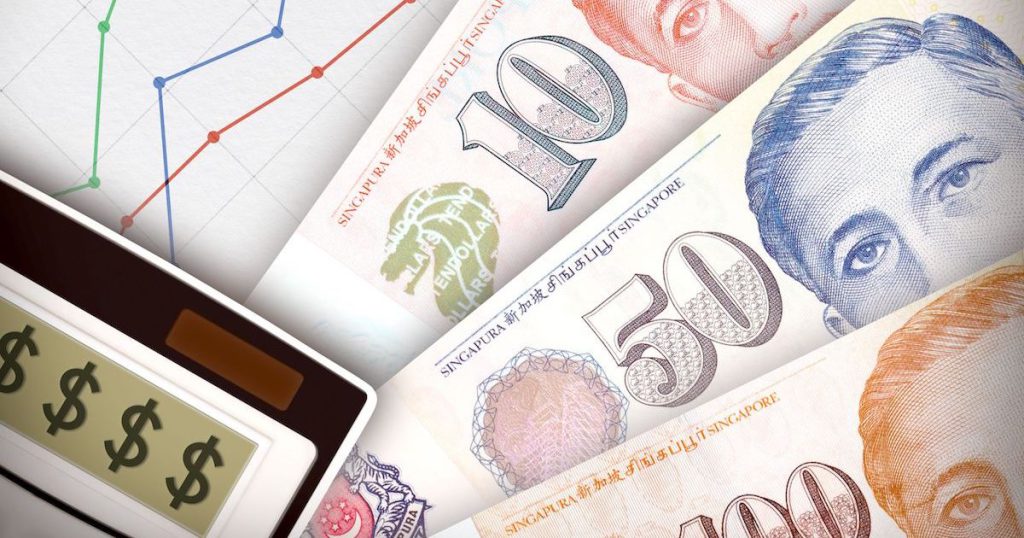Disclaimer: Opinions expressed below belong solely to the author
Singapore Department of Statistics (DoS) has just updated the latest Consumer Price Index data, which is broken down by household income.
This is a much better gauge than data averaged across the entire country, since the burden of inflation really depends on what you spend on, as prices of specific goods and services are affected differently depending on their input costs.
Fundamentally, every person’s “basket of goods” is unique, and so is inflation for each one of us.
That said, certain patterns can be distinguished among people belonging to the same income group as their spending habits tend to be closer to each other than to outsiders. This is important to track as it allows us to understand the different challenges faced by people in the economy, particularly the most vulnerable ones.
To that end, DoS reports figures for the top and bottom 20 per cent of the households as well as the broad 60 per cent in the middle, comparing how inflation affects each of them.
As it turns out, the richest see their living costs go higher much more quickly than the poorest Singaporeans:

Excluding Owner-Occupied Accommodation metric, which isn’t really a real expense, the inflation gap between the richest and poorest households grows to 2.3 percentage points, or a whopping 56 per cent higher pace of price acceleration for the wealthy.
Mind you, it isn’t a reflection of how much more they spend, but how much more expensive the things that they buy are getting.
Or, in other words, just consider that this inflation gap is actually higher than the increase in GST of two percentage points, that remains so controversial in Singapore.
What’s driving the gap?

While the poorest Singaporeans are complaining of increasing food prices, the wealthiest feel the most painful pinch in transportation due to rising car prices, petrol and… COE (please also take note of the different weights assigned to each expense by household group to reflect their relative burden).
Not only do the wealthy spend more than twice as much on transport, they have to shoulder considerably higher cost increases what adds to their inflation burden.
In fact, it’s transportation — which includes fuel costs — that is one of the main drivers of inflation:

However, unlike everywhere else in the world, due to the unique nature of private transportation costs in Singapore, this is rather excellent news for everybody else.
Taxing the rich
One of the main contributors to rising prices of transportation is COE, which has pretty much tripled for the top categories typically covering the most expensive, powerful and luxurious cars reaching a record S$114,000 during the latest bidding in July.

Because of ubiquitous public transit as well as relatively affordable services provided by companies like Grab or Gojek, owning a car in Singapore is not a necessity, but rather a status symbol — and one that costs a lot of money.
Fortunately, as we can see, many people are willing to pay this premium, which is a direct contribution to the Singapore budget. And not a small one either.
The government already expected an increase in revenue from vehicle taxes and COEs this year, expecting them to reach S$6.46 billion, but I’m not sure it has quite anticipated the record rally we’re seeing today.
Which means that more money, paid exclusively by people who can afford it, is going to fill the nation’s coffers just as we’re bracing for a possible global recession.
To grasp the scale of this contribution — S$6.46 billion (including COE in the range of S$4 billion) is close to eight per cent of all budgetary revenues, and more than half of all revenues from either GST or income taxes.
Considering that 80 per cent of PIT (personal income taxation) is already paid by the top 20 per cent of the wealthiest taxpayers, it is yet another massive contribution by the richest. And possibly one of the best ways to tax them without discouraging them from settling in Singapore.

Income or direct wealth taxes are boring and offer no perks, hence the rich will avoid them to the extent they can. However, cars are such a status symbol here, that the COE (on top of extremely high prices due to import taxes) is worth paying just to display your position on the social ladder.
That’s the implicit benefit that makes it worth to part with gigantic sums of money compared to other countries — making everybody happy in the process: the buyers, the sellers, the government and the rest of the society benefiting from billions of dollars in public spending.
Featured Image: fotopoly / depositphotos










